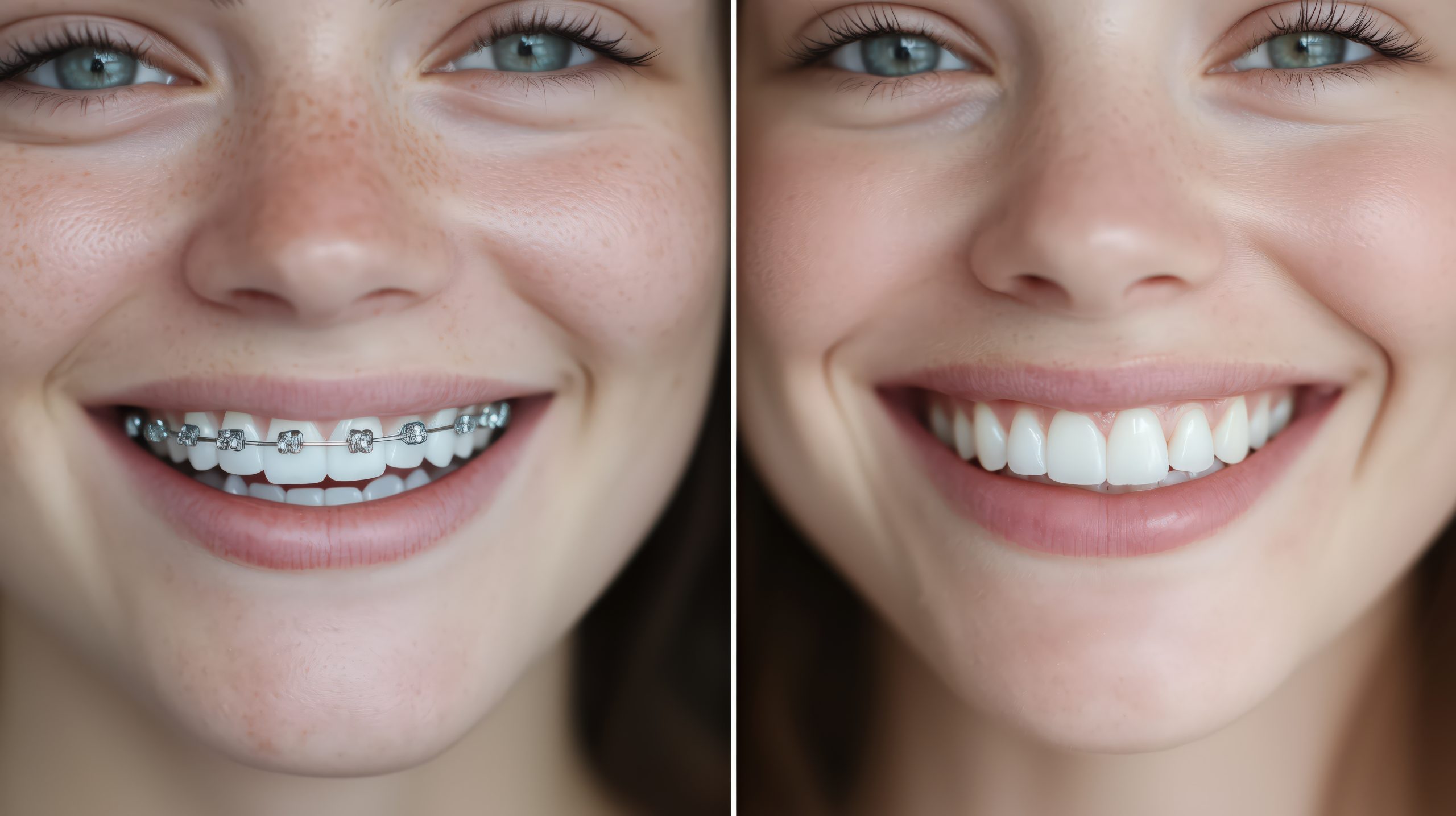So, you are thinking about straightening your teeth using Invisalign. With so many possibilities out there, ranging from care from an Orthodontist office, to even DIY online options, how do you know what is the best option for you?
In this blog, we interviewed Dr. Lun Wang and Dr. Kevin Lee of the PacificWest Dental Group, who are both certified specialists in Orthodontics and Invisalign Diamond providers, to go through what is it like to receive Invisalign treatment from a trusted orthodontist.
This is everything you need to know about Invisalign in 2020!
- What is Invisalign?
- Invisalign And Other Alternatives
- Invisalign Treatment
- Why Trust PacificWest for Your Invisalign Aligners?
What is Invisalign?
Invisalign Treatment Summarized in 300 Words
1. Consultation: This is the appointment where the doctor finds out about your needs, examines your teeth, shows what your teeth look like via the digital scan, and provides you with treatment options. We will also go over scheduling and financials with you, and answer any questions you might have about your treatment.
2. Diagnostic: This is often done on the same day of the consultation appointment. The doctor will collect a full set of records of you so he can complete the diagnostic process. In addition to the digital scan we took for you, we also need photographs and x-rays of your teeth and your face. This is a digital duplicate of your teeth and allows the doctors to spend the time to complete the diagnosis and map out a treatment plan for you.
The doctor spends on average 2 weeks to communicate with technicians at Invisalign to map out every single movement of your teeth, from start to finish!
3. Delivery:
This is where the journey starts! You will receive the aligners and we will go through the instructions on how to wear the aligners and how to take care of them. We will also show you the excellent Invisalign App which allows us to connect with you remotely and helps you stay on track with the treatment progress.
4. The hard work:
For best results, you should wear your aligners between 20 to 22 hours per day, only taking them to eat, brush, and floss daily. You will be switching to a new set of aligners approximately every 7-14 days and will be expected to come in for checkups approximately every 8-12 weeks. Over time, your teeth will gradually start to shift into their intended places.
5. Grand finale:
Congratulations, we did it! The treatment is finished, and a retainer is made for you, using the same technology as the Invisalign aligners. Retainers are needed as it takes 3-6 months after active movement for the bone around the teeth to heal up and stabilize. Make sure to wear your retainers as instructed to maintain the beautiful result that we’ve achieved!
Most importantly, make sure to show off that beautiful smile for the world to see :D
Our orthodontists at PacificWest provide Invisalign treatment in Vancouver and Surrey and we would be happy to answer any questions you have. Call us at Vancouver: 604-558-0993 or Surrey: 604-501-0993 to book a consultation today!
What is the Invisalign aligner?
Invisalign in Surrey is a unique approach to teeth straightening through the use of transparent plastic aligners. Impressions are taken of your teeth from which customized aligners are crafted to help guide your teeth into the desired position. The plastic used to create the aligners is almost entirely invisible. These aligners are worn directly over the teeth, applying gentle but consistent pressure to help mould your ideal smile.
Invisalign dental appliances are almost completely invisible, allowing you to enjoy orthodontic treatment in Vancouver without experiencing much change to your regular appearance.
Invisalign In-Detail: the Technology, the Aligner
Invisalign’s success hinges on its relationship to its proprietary 3D imaging technology and 3D printing to create the customized aligners patients need to improve their dental health. These tools allow Invisalign to craft aligners that are perfectly suited to your needs, increasing their effectiveness and precision.
Invisalign is an excellent solution to solve many common orthodontic issues including:
- Crooked teeth
- Protruding teeth
- Overcrowding
- Overbites, underbite, cross bite
- Malocclusions
- Other problems
What are the Aligners Made Of?
Invisalign aligners are constructed from clear plastic. However, to ensure durability and suitability for this type of treatment, a very specific, custom-crafted material called SmartTrack is used. This proprietary plastic aligner has been certified as safe for medical use.
This heat-resistant plastic is flexible, allowing for the ideal fit over the teeth while still allowing the wearer to enjoy normal movement of the mouth and jaws. Teeth move into the correct position at a gentle and gradual rate. The primary role of these high-quality plastic aligners is to achieve the desired result predictably, without causing the wearer discomfort.
Is Invisalign ISO Certified?
ISO is a governing body responsible for ensuring industry standards are established and adhered to. ISO certification is recognized worldwide. It is this organization that awards the quality certifications that help patients to feel confident a product is safe and effective.
Align Technology has been awarded ISO certification. Its ISO number is ISO 13485:2003. This important designation shows that the product meets the regulations required for orthodontic appliances of its kind.
Is Bisphenol-A (BPA) Used to Make Invisalign Aligners?
Invisalign aligners are crafted from certified medical-grade thermoplastic polymers. This particular material was chosen for the dental appliance for its unique flexible character and high safety rating. This type of material has enjoyed long-term use in other applications involved in the human body and is safe for use in dentistry and orthodontics.
Invisalign aligners are free from the following materials:
- Latex
- Parabens
- Phthalates
- Glutaraldehyde
- Epoxy
- Bisphenol A (BPA)
- Bisphenol S (BPS)
Any concerns about potential risks as a result of the use of Invisalign can and should be discussed with your orthodontist.
Invisalign And Other Alternatives
Is Invisalign a Popular Treatment Today?
As a result of its many advantages for patients, Invisalign continues to increase in popularity on an ongoing basis. It is estimated that this treatment has been the preferred choice of more than three million people across the globe. As others see the success of Invisalign treatment in Vancouver in their family members and friends, those in need of orthodontic treatment are far more likely to seriously consider this innovative orthodontic approach.
Other Options for Invisible Braces
But Invisalign isn’t the only option when it comes to invisible braces. There are a couple of different types of invisible braces which are typically designed for adults or older children who may want to straighten their teeth without the obvious look of traditional braces. There are generally three types of invisible braces: ceramic brackets, inside braces, and clear aligners.
Ceramic braces work the same way as traditional braces, but they use brackets made out of a material the same colour as the tooth rather than metal to camouflage the look of the braces. While ceramic braces stand out less than traditional braces, many people do find that they are not as invisible as they would prefer.
Inside braces, which are sometimes also called lingual braces or “iBraces” are placed behind the teeth rather than in front, so provide a great cosmetic alternative for those who do not want the look of traditional metal braces. Similar to traditional braces, lingual braces work by applying gentle yet continuous pressure on the teeth to encourage them to slowly shift into position.
Inside braces do have some special requirements, as they are a bit more involved than regular braces. One of the biggest prohibitive factors with lingual braces is that they tend to be quite a bit more costly, and they require strong technical expertise from the orthodontist.
(Invisalign is a type of clear aligner. Other manufacturers are making clear aligners, but Invisalign is still the best one by a significant margin)
Though there are a few different types of invisible braces, they each work in their way and they may or may not be best for your mouth. If you are thinking of getting invisible braces, talk to your orthodontist to evaluate what type would be best for you.
If Invisalign is still your top choice, it’s a good idea to consider the difference between them and traditional braces.
Invisalign vs. Braces–Which is Right for You?
We all hope for a perfect smile and to be able to chew comfortably. A bite that’s askew can cause a lot of discomfort. Straight teeth can greatly improve your quality of life. If you are seeking the guidance of an orthodontist in Vancouver, you might wonder if Invisalign or braces in Vancouver are a better fit for your situation.
Your orthodontist office in Vancouver will be able to consider your specific issues and make a recommendation, but these are some of the things they will think about:
- Your budget
Depending on how much you have to spend, your orthodontist in Vancouver will recommend a treatment option that meets your treatment goals but stays within your price range.
- Your specific needs
The complexity and nature of what you are trying to accomplish will dictate which treatment path will be most effective. Your dental history and existing dental work may impact which options are available to you. Ask your Vancouver orthodontist which choice is best for your specific cases.
- Your lifestyle
Your daily activities and ability to adhere to the structure of the treatment plan will impact which option is best for you. Some sporting activities can make braces in Surrey less practical, while those who consider themselves to be less disciplined may find sticking to wearing trays more difficult.
- Your treatment time frame
The length of your treatment time may vary depending on the treatment option in Surrey selected. Consult with your orthodontist in Vancouver as to how much time you have to reach your goals.
Your orthodontist in Vancouver will help you make a decision that will meet your specific needs. Whatever you decide, you will be well on your way to a perfect smile, comfortable chewing, and a significantly better quality of life. Whether Invisalign or braces, your smile and comfort are about to improve.
What are the Advantages of Using Invisalign?
When it comes to straightening your teeth, both Invisalign and braces will do the trick. What you may not realize is Invisalign has a lot of other advantages when compared to braces. These advantages extend well past the esthetic benefits that most people think of when it comes to Invisalign.
- Less Likely to Irritate Gums and Tongue
Brackets on traditional braces can rub against the gums and tongue, leading to irritation. Brace wearers typically have to put wax around the brackets to stop the irritation from occurring, but it is difficult to keep the wax in place. On the other hand, Invisalign is made of smooth plastic that does not irritate the gums. Because of that, Invisalign is more comfortable than braces.
- Eat Whatever You Want
If you wear braces, you have an entire list of foods that you have to avoid. You can’t eat hard, sticky, or chewy foods since those foods can break the brackets on the braces.
Invisalign allows you to eat whatever you want. That’s because you can take Invisalign out whenever you want. Simply remove it, eat the food you want to eat, and then put your Invisalign back in your mouth after the meal.
- Brush and Floss Normally
You have probably heard horror stories of people who have terrible stains on their teeth after having their braces removed. That’s because the braces covered a big portion of their teeth, so they couldn’t brush properly. They also couldn’t floss because the brackets were in the way. When you wear an Invisalign, you can simply remove it and take care of your dental needs. Then, you can put it back in so it can get back to work on straightening your teeth.
- Aesthetics
Invisalign aligners are clear and removable, making straight teeth easier to obtain and as discreet as possible! You hardly notice the aligners when they are in, making Invisalign® a favourite option for adult patients.
Thanks to all of the benefits, more and more people are choosing Invisalign over braces. From comfort to ease of use, Invisalign wins out in category after category.
What Are the Disadvantages of Choosing Invisalign?
Just as any tool that we use, they all have their advantages and limitations. Invisalign aligners are removable, they can be lost or broken when they are out of your mouth; If they are not worn properly or enough time during the day, then your teeth will not move properly or at all. Therefore, patient cooperation can be an issue.
Invisalign Treatment
How Long Does Invisalign Treatment Take?
Invisalign® also typically requires less frequent visits to your orthodontist because there isn’t a need to tighten wires as in traditional braces. Invisalign® patients wear a set of aligners for 2 weeks and remove them only to eat, drink, brush, and floss. Every two weeks, you will move to the next set of aligners in the series until your teeth reach the correct position.
Treatment typically lasts 9 to 15 months but can last slightly shorter or longer depending on your specific case. More details on Invisalign procedures are here.
How to Ensure Success in Your Invisalign Treatment
If you have decided now is the time to invest in braces or Invisalign, you are probably excited and nervous. If that time is quickly approaching, you may be wondering how you can best prepare for the coming treatment. Here are some tips on how to best prepare for braces or Invisalign treatment:
- Know Your Treatment Schedule
Getting braces or Invisalign in Surrey is a time commitment, as treatment does not happen overnight. Before beginning treatment, go over a treatment plan with your orthodontist. This should include a rough timeline of how long treatment is expected to last (of course this can change as every mouth reacts differently).
If going with Invisalign, make sure you understand how long to wear each aligner, when to remove them, and how often you should expect a new one. With braces, you will need to make sure that you are regularly visiting the orthodontist for adjustments, so make sure you understand this schedule.
- Know How to Keep up Proper Hygiene
Having braces or even Invisalign can prove a challenge to maintain proper oral hygiene during treatment. With braces, it can become more difficult to brush effectively, as the brackets get in the way. Flossing is also much more difficult, as the wires block your floss. Your orthodontist should be able to show you how to effectively floss and brush while you have braces.
With Invisalign, you can remove the tray, and keeping up regular oral hygiene is much easier. However, you will want to make sure you are properly cleaning your aligners, as this can help to keep your teeth healthy and clean as well.
- Food and Drink
Continuing with the theme of oral hygiene, you should avoid sugary food and drink during treatment, as these increase the likelihood of tooth decay. Before getting braces you should understand that there may be a need to prepare yourself for slight adjustments in diet during treatment. Avoid hard or sticky foods, as these could damage your braces. These restrictions do not apply to Invisalign as you will be removing your aligner when eating. However, please make sure you brush your teeth before putting the aligner back in.
What Type of Orthodontic Issues can Invisalign Fix?
For the majority of people wondering if Invisalign in Vancouver can help with their orthodontic problems, the answer is almost always yes! Invisalign treatment is clinically proven to be effective for a broad range of teeth straightening cases, from mild to complex – and the treatment is continuously innovating to expand that range and get better results.
Some common concerns that can be treated with Invisalign include:
- Gapped teeth
Gaps between the teeth can occur with abnormal growth of the jawbone – or by missing teeth causing surrounding teeth to shift due to extra space. Spacing issues and gaps between teeth can lead to gum problems due to lack of protection of the teeth, periodontal pockets, and increased risk of periodontal disease.
- Overbite
Overbite is when the upper teeth bite over top of the lower teeth – typically caused by genetics, bad oral habits, or overdevelopment of the bone that supports the teeth. Overbites can lead to issues in the gums, irritation, wear on the lower teeth, and can cause problems in the jaw.
- Underbite
Underbite occurs when the lower teeth protrude out past the front upper teeth. This is usually caused by a lack of growth in the upper jaw and/or overgrowth of the lower jaw. Underbite can also be caused by missing upper teeth and can prevent normal function of front teeth or molars which can lead to uneven wear. Underbite can also lead to problems in the jaw.
- Open Bite
This occurs when some teeth are unable to make contact with the opposing teeth for a proper bite. Usually caused by genetic abnormal jaw structure or excessive thumb-sucking.
- Crowding
This occurs when there is not enough room in the jaw for the teeth. Crowding can result in severely crooked teeth, leading to tooth decay and gum disease.
- Crossbite
This happens when the top and bottom jaws are misaligned, and causes one or more of the upper teeth to bite on the inside of the lower teeth. This can cause wear of the teeth, gum disease, and bone loss.
Why Trust PacificWest for Your Invisalign Aligners?
Dr. Wang has provided Invisalign® for more than 15 years as an early supporter of the clear aligners. Dr. Wang himself was his first patient in using the Invisalign system. By using himself as a guinea pig, Dr. Wang gained valuable experience and refined his technique in working with Invisalign. Invisalign is a tool used by doctors, who are the brain and designer behind every movement of your teeth.
The success of your Invisalign treatment is determined by the experience and expertise of the provider, and Dr. Wang provides high-quality orthodontic care in Surrey and Vancouver. Thinking it’s time to improve your smile? Wondering if Invisalign is right for you? Contact the PacificWest Dental team now at 604-558-0993.
Your perfect smile is just a phone call away!

Hello! I’m Dr. Kevin Lee, a certified orthodontic specialist at PacificWest Dental Group, proudly serving the vibrant communities of Vancouver and Surrey. My journey into orthodontics began back in high school. As a teenager wearing braces, I became fascinated by the intricate blend of art, engineering, and biology that defines this field. This early experience ignited a passion that has guided me throughout my career.
I pursued my academic journey at the University of British Columbia (UBC), where I earned a Bachelor of Science in Biochemistry in 2006, followed by a Doctor of Dental Medicine in 2011. After a year-long residency at Montefiore Medical Center in New York, I returned to UBC to complete a combined Master of Science in Craniofacial Biology and a Diploma in Orthodontics in 2015. That same year, I achieved certification from both the Royal College of Dentists of Canada and the American Board of Orthodontics.
With over a decade of clinical experience, I remain deeply committed to staying at the forefront of orthodontic advancements. At PacificWest Dental Group, we prioritize personalized treatment plans tailored to each patient’s unique needs, ensuring comfort and care every step of the way. Our goal is to help you achieve the smile you’ve always dreamed of in a welcoming and supportive environment.
Outside the clinic, I enjoy engaging with our community and staying active. Whether it’s through local events or outdoor activities, I believe in building strong relationships both inside and outside the office. I look forward to meeting you and working together to create a beautiful, confident smile.
Services we provide:
-Invisalign
-Braces
-Lingual Braces
-Digital treatment planning
-TMJ and headpain treatment
-Laser Therapy
-Sleep Apnea Oral Appliance
-Dysport Cosmetic Injectables





